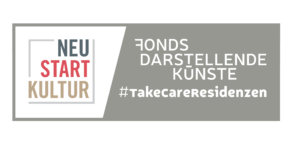Gaia´s Dialogue
Gaia, the mythological Greek goddess responsible for the creation of earth and the cosmos, represents the Mother Earth and the forces of nature. This name was adopted by the Belgian philosopher Isabelle Strengers to refer to the “living planet” – a nature that is constituted by an assemblage of relations involving living things, oceans, the atmosphere, climate and at the same time its manifestation against the human interference in nature through tsunamis, climate change and epidemics.
Gaia´s dialogues - towards a non-anthropocentric choreography was a research developed in March and April 2020 in the context of the program take care residenz# in collaboration with tanzhaus nrw. This scenic and choreographic research is inspired by the movement and forces within manifestations of nature. It is about developing a concept of choreography that moves in the space between human and non-human agents, going beyond the anthropocentric body by presenting these agents side by side and without hierarchy among them. With this, I searched for a non-anthropocentric choreography in which the human body is only a small element within a larger landscape.
As practical starting point, I began to approach the subject of the non-human body through the interplay of different bodies such as leaves, plants and paper in conjunction with ventilators. Thus, the research began with a series of attempts to set non-human bodies in motion using ventilators and other theatrical devices.
In this process of searching for a non-anthropocentric choreography, I realized that would be hard to avoid to not ran into the contradiction of becoming a choreography with beings set in motion by human action, not set in motion by nature. I was working to create the illusion of choreography in the theatrical space that is performed by non-human actors, but it is nonetheless a mode of working that still depends on human action to happen. The awareness of this contradiction allowed other questions to emerge, addressing the interaction of non-human bodies with my human bodies, as well as the merging of these two bodies, opening the work to new perspectives and layers.
Guided by these new questions, I started to work more and more outside, where I could explore a more direct relationship with these non-human agents such as trees, wind, rivers, and birds, allowing myself to be influenced by the action of these agents in their natural environment, rather than insisting in finding ways of reproducing and simulating these conditions in a studio space.
Experiment with the elements: boiling water, smoke, plants and lights.

